The Respiratory Diagnostics market is expected to grow from USD 8.6 billion in 2022 to USD 18.7 Billion by 2032, at a CAGR of 8.10% during the forecast period 2023-2032.
Static lung volumes measure the size of the lung’s total lung capacity. Chest X-ray and CT scan. Occasionally the need of a chest X-ray or CT scan. Chest X-ray is usually the first test used to diagnose lung problems. However, chest X-rays cannot give a definitive diagnosis. However, Spirometry is the primary test used to measure lung function. It can be performed by either the family doctor or a specialist. The test measures the amount of air inhaled and exhaled and how fast the air is breathed in and out.
The driving factors of the market growth are the increasing prevalence of respiratory disorders has increased the market demand for advanced respiratory diagnostic facilities. In expansion, the rapidly increasing number of people in the aged age group has also raised the demand for advanced respiratory agnostic facilities. Also, the extensive research and development programs the key market players brought out to introduce cutting-edge diagnostic procedures to produce faster results with precision have stimulated the economy for respiratory diagnostic systems.
This study delivers a comprehensive analysis of product, diseases, and region. The product segment includes assays and reagents, instruments and devices, and services & software. The instruments and devices segment holds the largest market share in 2022 due to the rapid increase in diagnostic tests being carried out globally to a specific line of treatment that must be followed for a faster recovery requires the healthcare industry's use of modern equipment and devices. The diseases segment includes tuberculosis, lung cancer, chronic obstructive pulmonary disease, asthma, and other diseases. The lung cancer segment holds the largest market share in 2022 due to Various habitual practices like smoking and consuming tobacco have raised the chances of tuberculosis among the people, which has, in turn, forced the growth of the market.
The market has been divided into North America, Europe, Asia-Pacific, Middle East & Africa, and South America. North America holds the largest market share due to the high majority of chronic respiratory diseases in this region. In expansion, the vast number of people belonging to the geriatric population has boosted the demand for advanced respiratory diagnostics services in the market.
Some of the notable players in the market are Cosmed Srl, Bio-Rad Laboratories, Inc., bioMerieux SA, Becton, Dickinson, and Company, Alere, Inc. and Abbott Laboratories.
Report Description:
1. Introduction
1.1. Objectives of the Study
1.2. Market Definition
1.3. Research Scope
1.4. Currency
1.5. Key Target Audience
2. Research Methodology and Assumptions
3. Executive Summary
4. Premium Insights
4.1. Porter’s Five Forces Analysis
4.2. Value Chain Analysis
4.3. Top Investment Pockets
4.3.1. Market Attractiveness Analysis by Product
4.3.2. Market Attractiveness Analysis by Diseases
4.3.3. Market Attractiveness Analysis by Region
4.4. Industry Trends
5. Market Dynamics
5.1. Market Evaluation
5.2. Drivers
5.2.1. Rising pollution in the environment.
5.3. Restraints
5.3.1. Stringent Rules and Regulations of Government
5.4. Opportunities
5.4.1. Technological Advancement
6. Global Respiratory Diagnostics Market Analysis and Forecast, By Product:
6.1. Segment Overview
6.2. Assays and Reagents
6.3. Instruments and Devices
6.4. Services & Software
7. Global Respiratory Diagnostics Market Analysis and Forecast, By Diseases
7.1. Segment Overview
7.2. Tuberculosis
7.3. Lung Cancer
7.4. Chronic Obstructive Pulmonary Disease
7.5. Asthma
7.6. Others
8. Global Respiratory Diagnostics Market Analysis and Forecast, By Regional Analysis
8.1. Segment Overview
8.2. North America
8.2.1. U.S.
8.2.2. Canada
8.2.3. Mexico
8.3. Europe
8.3.1. Germany
8.3.2. France
8.3.3. U.K.
8.3.4. Italy
8.3.5. Spain
8.4. Asia-Pacific
8.4.1. Japan
8.4.2. China
8.4.3. India
8.5. South America
8.5.1. Brazil
8.6. Middle East and Africa
8.6.1. UAE
8.6.2. South Africa
9. Global Respiratory Diagnostics Market-Competitive Landscape
9.1. Overview
9.2. Market Share of Key Players in the Respiratory Diagnostics Market
9.2.1. Global Company Market Share
9.2.2. North America Company Market Share
9.2.3. Europe Company Market Share
9.2.4. APAC Company Market Share
9.3. Competitive Situations and Trends
9.3.1. Product Launches and Developments
9.3.2. Partnerships, Collaborations, and Agreements
9.3.3. Mergers & Acquisitions
9.3.4. Expansions
10. Company Profiles
10.1. Cosmed Srl.
10.1.1. Business Overview
10.1.2. Company Snapshot
10.1.3. Company Market Share Analysis
10.1.4. Company Product Portfolio
10.1.5. Recent Developments
10.1.6. SWOT Analysis
10.2. Bio-Rad Laboratories, Inc.
10.2.1. Business Overview
10.2.2. Company Snapshot
10.2.3. Company Market Share Analysis
10.2.4. Company Product Portfolio
10.2.5. Recent Developments
10.2.6. SWOT Analysis
10.3. bioMerieux SA.
10.3.1. Business Overview
10.3.2. Company Snapshot
10.3.3. Company Market Share Analysis
10.3.4. Company Product Portfolio
10.3.5. Recent Developments
10.3.6. SWOT Analysis
10.4. Becton, Dickinson and Company
10.4.1. Business Overview
10.4.2. Company Snapshot
10.4.3. Company Market Share Analysis
10.4.4. Company Product Portfolio
10.4.5. Recent Developments
10.4.6. SWOT Analysis
10.5. Alere, Inc.
10.5.1. Business Overview
10.5.2. Company Snapshot
10.5.3. Company Market Share Analysis
10.5.4. Company Product Portfolio
10.5.5. Recent Developments
10.5.6. SWOT Analysis
10.6. Abbott Laboratories.
10.6.1. Business Overview
10.6.2. Company Snapshot
10.6.3. Company Market Share Analysis
10.6.4. Company Product Portfolio
10.6.5. Recent Developments
10.6.6. SWOT Analysis
List of Table
1. Global Respiratory Diagnostics Market, By Product, 2019-2032 (USD Billion)
2. Global Assays and Reagents Respiratory Diagnostics Market, By Region, 2019-2032 (USD Billion)
3. Global Instruments and Devices Respiratory Diagnostics Market, By Region, 2019-2032 (USD Billion)
4. Global Services & Software, Respiratory Diagnostics Market, By Region, 2019-2032 (USD Billion)
5. Global Respiratory Diagnostics Market, By Diseases, 2019-2032 (USD Billion)
6. Global Tuberculosis Respiratory Diagnostics Market, By Region, 2019-2032 (USD Billion)
7. Global Lung Cancer Respiratory Diagnostics Market, By Region, 2019-2032 (USD Billion)
8. Global Chronic Obstructive Pulmonary Disease Respiratory Diagnostics Market, By Region, 2019-2032 (USD Billion)
9. Global Asthma Respiratory Diagnostics Market, By Region, 2019-2032 (USD Billion)
10. Global Others Respiratory Diagnostics Market, By Region, 2019-2032 (USD Billion)
11. North America Respiratory Diagnostics Market, By Product, 2019-2032 (USD Billion)
12. North America Respiratory Diagnostics Market, By Diseases, 2019-2032 (USD Billion)
13. U.S. Respiratory Diagnostics Market, By Product, 2019-2032 (USD Billion)
14. U.S. Respiratory Diagnostics Market, By Diseases, 2019-2032 (USD Billion)
15. Canada Respiratory Diagnostics Market, By Product, 2019-2032 (USD Billion)
16. Canada Respiratory Diagnostics Market, By Diseases, 2019-2032 (USD Billion)
17. Mexico Respiratory Diagnostics Market, By Product, 2019-2032 (USD Billion)
18. Mexico Respiratory Diagnostics Market, By Diseases, 2019-2032 (USD Billion)
19. Europe Respiratory Diagnostics Market, By Product, 2019-2032 (USD Billion)
20. Europe Respiratory Diagnostics Market, By Diseases, 2019-2032 (USD Billion)
21. Germany Respiratory Diagnostics Market, By Product, 2019-2032 (USD Billion)
22. Germany Respiratory Diagnostics Market, By Diseases, 2019-2032 (USD Billion)
23. France Respiratory Diagnostics Market, By Product 2019-2032 (USD Billion)
24. France Respiratory Diagnostics Market, By Diseases, 2019-2032 (USD Billion)
25. U.K. Respiratory Diagnostics Market, By Product, 2019-2032 (USD Billion)
26. U.K. Respiratory Diagnostics Market, By Diseases, 2019-2032 (USD Billion)
27. Italy Respiratory Diagnostics Market, By Product, 2019-2032 (USD Billion)
28. Italy Respiratory Diagnostics Market, By Diseases, 2019-2032 (USD Billion)
29. Spain Respiratory Diagnostics Market, By Product, 2019-2032 (USD Billion)
30. Spain Respiratory Diagnostics Market, By Diseases, 2019-2032 (USD Billion)
31. Asia Pacific Respiratory Diagnostics Market, By Product, 2019-2032 (USD Billion)
32. Asia Pacific Respiratory Diagnostics Market, By Diseases, 2019-2032 (USD Billion)
33. Japan Respiratory Diagnostics Market, By Product, 2019-2032 (USD Billion)
34. Japan Respiratory Diagnostics Market, By Diseases, 2019-2032 (USD Billion)
35. China Respiratory Diagnostics Market, By Product 2019-2032 (USD Billion)
36. China Respiratory Diagnostics Market, By Diseases, 2019-2032 (USD Billion)
37. India Respiratory Diagnostics Market, By Product 2019-2032 (USD Billion)
38. India Respiratory Diagnostics Market, By Diseases, 2019-2032 (USD Billion)
39. South America Respiratory Diagnostics Market, By Product, 2019-2032 (USD Billion)
40. South America Respiratory Diagnostics Market, By Diseases, 2019-2032 (USD Billion)
41. Brazil Respiratory Diagnostics Market, By Product 2019-2032 (USD Billion)
42. Brazil Respiratory Diagnostics Market, By Diseases, 2019-2032 (USD Billion)
43. Middle East and Africa Respiratory Diagnostics Market, By Product, 2019-2032 (USD Billion)
44. Middle East and Africa Respiratory Diagnostics Market, By Diseases, 2019-2032 (USD Billion)
45. UAE Respiratory Diagnostics Market, By Product, 2019-2032 (USD Billion)
46. UAE Respiratory Diagnostics Market, By Diseases, 2019-2032 (USD Billion)
47. South Africa Respiratory Diagnostics Market, By Product 2019-2032 (USD Billion)
48. South Africa Respiratory Diagnostics Market, By Diseases, 2019-2032 (USD Billion)
List of Figures
1. Global Respiratory Diagnostics Market Segmentation
2. Respiratory Diagnostics Market: Research Methodology
3. Market Size Estimation Methodology: Bottom-Up Approach
4. Market Size Estimation Methodology: Top-Down Approach
5. Data Triangulation
6. Porter’s Five Forces Analysis
7. Value Chain Analysis
8. Global Respiratory Diagnostics Market Attractiveness Analysis by Product
9. Global Respiratory Diagnostics Market Attractiveness Analysis by Diseases
10. Global Respiratory Diagnostics Market Attractiveness Analysis by Region
11. Global Respiratory Diagnostics Market: Dynamics
12. Global Respiratory Diagnostics Market Share by Product (2022 & 2032)
13. Global Respiratory Diagnostics Market Share by Diseases (2022 & 2032)
14. Global Respiratory Diagnostics Market Share by Regions (2022 & 2032)
15. Global Respiratory Diagnostics Market Share by Company (2022)
Market research is a method of gathering, assessing and deducing data & information about a particular market. Market research is very crucial in these days. The techniques analyze about how a product/service can be offered to the market to its end-customers, observe the impact of that product/service based on the past customer experiences, and cater their needs and demands. Owing to the successful business ventures, accurate, relevant and thorough information is the base for all the organizations because market research report/study offers specific market related data & information about the industry growth prospects, perspective of the existing customers, and the overall market scenario prevailed in past, ongoing present and developing future. It allows the stakeholders and investors to determine the probability of a business before committing substantial resources to the venture. Market research helps in solving the marketing issues challenges that a business will most likely face.
Market research is valuable because of the following reasons:
Our research report features both the aspects; qualitative and quantitative. Qualitative part provides insights about the market driving forces, potential opportunities, customer’s demands and requirement which in turn help the companies to come up with new strategies in order to survive in the long run competition. The quantitative segment offers the most credible information related to the industry. Based on the data gathering, we use to derive the market size and estimate their future growth prospects on the basis of global, region and country.
Our market research process involves with the four specific stages.

Data Collection: This stage of the market research process involves with the gathering and collecting of the market/industry related data from the sources. There are basically two types of research methods:
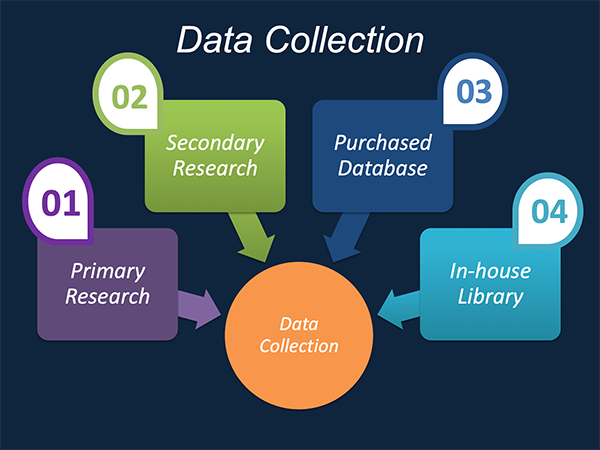
Data Synthesis: This stage includes the evaluation and assessment of all the data acquired from the primary and secondary research. It likewise includes in evaluating the information for any disparity watched while information gathering identified with the market. The data & information is gathered with consideration to the heterogeneity of sources. Scientific and statistical methods are implemented for synthesizing dissimilar information sets and provide the relevant data which is fundamental for formulating strategies. Our organization has broad involvement with information amalgamation where the information goes through different stages:


Market Formulation & Deduction: The last stage includes assigning the data & information in a suitable way in order to derive market size. Analyst reviews and domain based opinions based on holistic approach of market estimation combined with industry investigation additionally features a crucial role in this stage.
This stage includes with the finalization of the market size and numbers that we have gathered from primary and secondary research. With the data & information addition, we ensure that there is no gap in the market information. Market trend analysis is finished by our analysts by utilizing data extrapolation procedures, which give the most ideal figures to the market.
Data Validation: Validation is the most crucial step in the process. Validation & re-validation through scientifically designed technique and process that helps us finalize data-points to be used for final calculations. This stage also involves with the data triangulation process. Data triangulation generally implicates the cross validation and matching the data which has been collected from primary and secondary research methods.





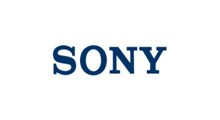

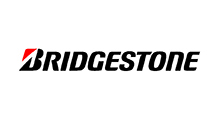

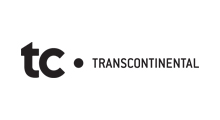















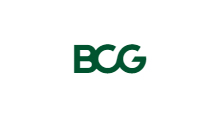


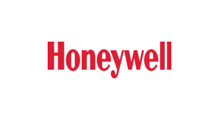

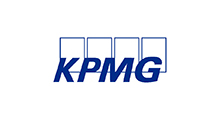
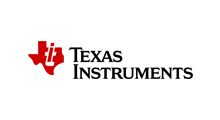



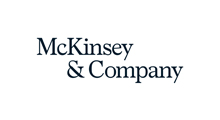

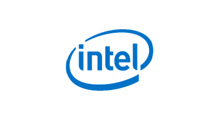







Free Customization
Countries can be added on demand
Free yearly update on purchase of Multi/Corporate User License
Companies served till date

We serve our customers 24x7 for 365 days through calls, emails and live chat options.
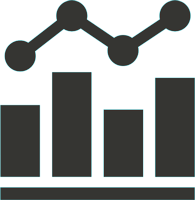
Huge database of exceptional market reports bringing market intelligence to your fingertips.

SSL enabled, we offer you various secured payment options for risk free purchase.